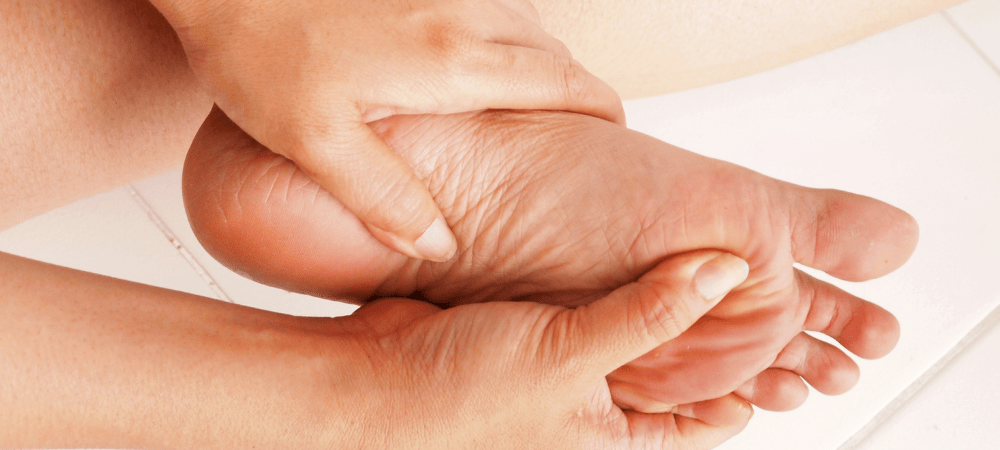Caring for Your Feet

Did you know that one quarter of your body’s 206 bones are in your feet? That’s 26 bones in each foot! Every time a step is taken, there are also 33 joints per foot working with an intricate group of muscles and tendons to get you from one place to another.
Not only do you need your feet to keep you mobile, but they also help you balance, support your body and absorb shock when walking or running. That’s why it’s important to keep your feet healthy.
There are obvious factors that impact the health of your feet, such as high heels and improper posture, but other factors such as diabetes can also have a big impact. People with diabetes have poor circulation, which may cause trouble with their feet. They may not be able to feel hot, cold or pain sensations in their feet and when left untreated, little cuts and sores could grow to become ulcers.
Now’s the time to get educated about foot care so that you can continue to stay active and pain-free.
Some common foot problems inherited from birth or developed over time include corns, calluses, plantar warts, bunions, flat feet and heel pain. It’s important that you never attempt to treat these problems on your own using sharp tools and/or chemicals. These may cause puncture wounds that become infected.
If you’re experiencing foot problems, pain or notice any abnormal changes to your feet, consult a doctor or foot care specialist to get them treated properly. Occasionally, foot problems can be warning signs for more serious medical conditions such as arthritis, diabetes or nerve/circulatory disorders.
You should visit your doctor or a foot care specialist right away if…
- You have a sore that isn’t healing or is infected
- Your feet feel unusually cold
- You feel cramps, numbness, tingling or discomfort in your feet
Otherwise, here are some daily foot care tips:
- Wash your feet daily using warm water making sure to dry them thoroughly, especially in between toes.
- Use a moisturizing cream (foot cream is best) on the top and bottom of your feet to prevent dry, cracked skin.
- Wear clean, dry socks that don’t have tight elastic bands on the top.
- Wear comfortable shoes that are well-fitted and provide proper support.
- Check your feet daily for cuts, blisters, sores, infected toenails or swelling.
Nail care tips:
- Cut toe nails after bathing as they will soften in the water and will be easier to cut.
- Make sure to always use a proper nail clipper to cut toe nails.
- Trim your nails straight across so that you don’t accidentally cut them too short.
- If you have poor eyesight or can’t reach your feet properly, ask for help.
Practice good foot care:
- As often as you can, try to take a walk. Walking keeps you healthy overall and best of all, you can walk anytime, anywhere for free.
- Avoid extended periods of sitting or standing still. When in a situation where you can’t go for walk, move your feet, flex your muscles and change positions frequently in order to maintain good blood flow.
- Do gentle foot exercises to strengthen your feet. Move your feet in circles and then up and down to maintain flexibility, mobility and circulation.
How to choose a well-fitted shoe:
- Forget about price and style, if your shoes don’t feel comfortable, don’t buy them.
- Measure your feet before buying a new pair of shoes. Your foot size can actually change with age. The best time to measure your feet is at the end of the day after walking and standing.
- Always try shoes on before buying them since different brands and styles fit differently.
- Walk around the store in the shoes to make sure your heels don’t slide up and down when walking and there’s enough room in the toes.
Finally, a Chiropodist or Podiatrist (foot care professional) is a designated specialist by education and training who’s qualified to diagnose and treat conditions of the foot, ankle and structure of the lower leg. Chiropodists can treat foot disorders by manipulating the soft tissue and by medication or surgery. To find one near you, the Ontario Society of Chiropodists provides a listing.
Foot facts taken from Women’s College Hospital and Toronto Public Health.
